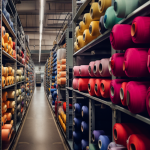As the import and export market for white goods is witnessing remarkable growth with a projected annual increase of 2.1%, we envision an escalating global demand for household appliances, spotlighting the intricate dynamics of white goods logistics. Here we explore everything we need to know when it comes to White goods logistics.
White goods vs brown goods
White goods, a term originating from the early 20th century, denotes large household appliances like refrigerators, washing machines, dishwashers, and air conditioners. As a counterpart, the mid-20th century gave rise to the term ‘brown goods’, referring to smaller, portable or semi-portable electronics such as televisions, radios, and personal computers that were often made in wooden cabinets bearing brown hues.
But, shipping both white goods and brown goods poses particular challenges due to their size, weight, and fragility, which needs meticulous packaging and handling.
What are the key challenges while shipping white goods?
Packaging and handling: Given their significant size, weight, and fragility, safeguarding against transit damage necessitates meticulous packaging and handling.
Industry experts: The logistical complexities call for specialised equipment and trained personnel.
Other challenges include ensuring timely delivery across diverse geographical locales, maintaining cost-effectiveness, mitigating environmental impact, and managing the return or disposal of old goods.
These complexities, however daunting, can be effectively handled with strategic planning and a dependable logistics partner. By adopting solutions that secure and expedite delivery, balance costs, and uphold sustainability, the logistics of white goods can be rendered seamless.
And interestingly, the term ‘white goods’ originates in the early 20th century, when these large appliances were traditionally painted white.



